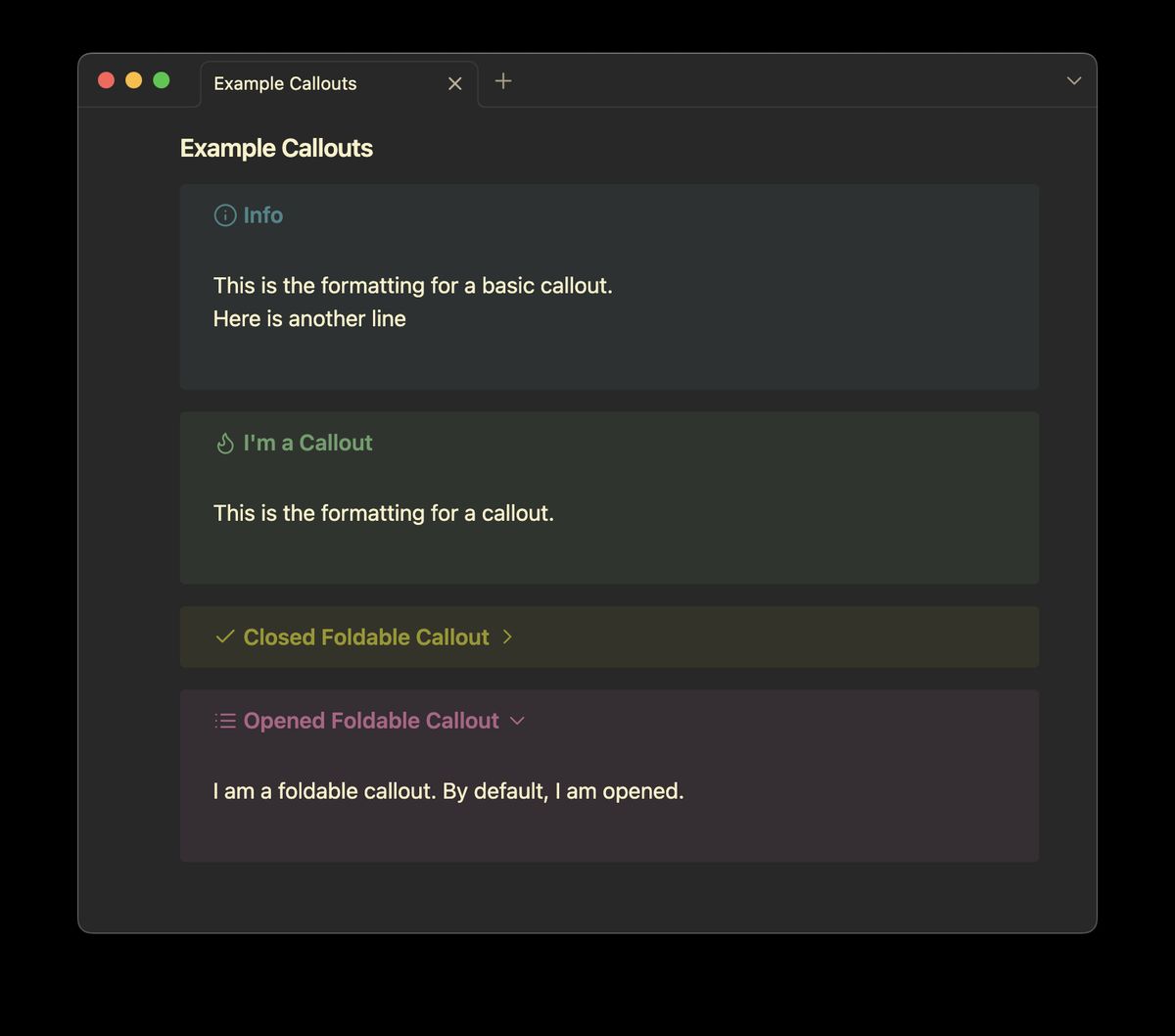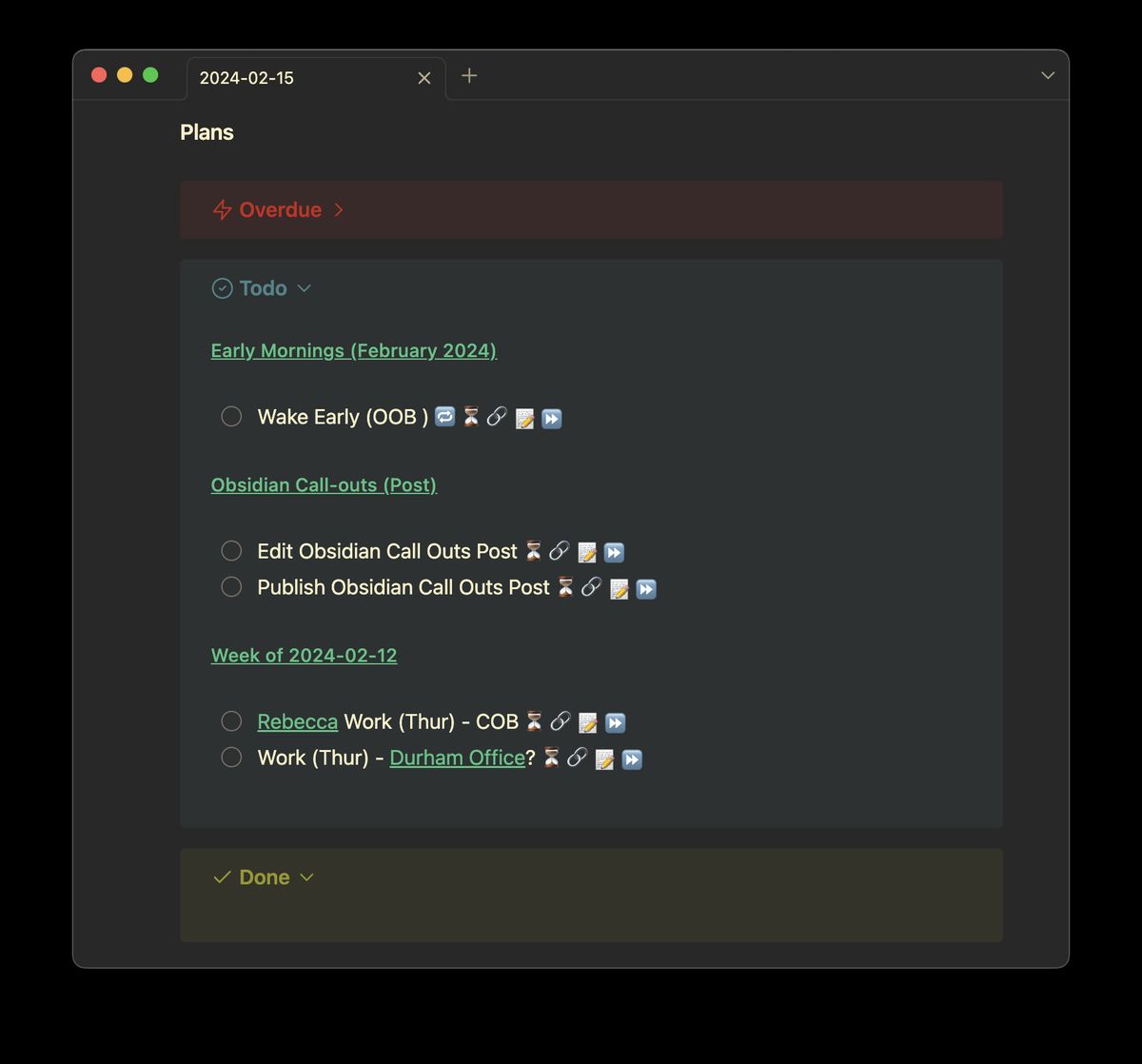Obsidian Callouts

Several months ago, I read about obsidian callouts in a post. At the time, I thought it was a neat feature, but didn’t know what I would use them for. “Why would I need an announcement box for in my personal notes?”
Recently while testing out the Obsidian Tasks Plugin, I realized I could use callout boxes to clean up and organize tasks in my notes. Since that realization, I use callouts for all of my task views, and a few other places too.
What are Callouts?

Callouts are a way to easily break up an obsidian note. They are colored boxes that contain content, and can be similar to a html details element. They are in the announcement notes you see after updating Obsidian (which is how I was familiar with them).
To create a callout in Obsidian, you just create a normal block quote, but have a callout tag for the first line:
>[!info]
>This is the formatting for a basic callout.
>Here is another lineThe !info defines the type of callout (ex: todo, summary, error, bug…). There are many, and they determine the icon used, the color of the box, and the default title. I say default, because the title can be changed by adding it after the tag. For example, to define “I’m a Callout” as the title for a hint callout:
>[!hint] I'm a Callout
>This is the formatting for a callout.Lastly, callouts can be made foldable by including a + or - immediately after the closing bracket. A foldable callout can be collapsed to just the title bar when clicking it. A - means that by default, the callout will be collapsed, while a + will default it to opened. An opened callout:
>[!example]+ I'm a Callout
>I am a foldable callout. By default, I am opened. How I use Them

I use callouts for two purposes: 1) to create ‘dashboards’ of information in my notes and 2) to define a subsection of my note I can collapse.
The ‘dashboard’ use is mostly partnered with the Obsidian Tasks Plugin I started using recently. In my new setup, I define tasks under different projects notes. Next, I have task views that let me see all the scheduled tasks for a given day, week, or month in my periodic notes. These views are all defined inside callouts. This helps add some formality to task sections, and allows me to collapse the sections if it’s too overwhelming.
The less common, but increasing use for callouts, is when I want to section a large chunk of information into a collapsed box. For example, I might have a note with several long lists that I need to reference occasionally, but don’t want them visually taking up the whole note. Using callouts, I can define the lists under nice named tabs that only expand when needed.
Conclusion
Despite thinking I would never use callouts when I first learned of them, I can’t imagine obsidian without them now. They allow me to use the tasks plugin in a way which isn’t a complete mess. This has been a wonderful improvement to both my work and personal vaults.